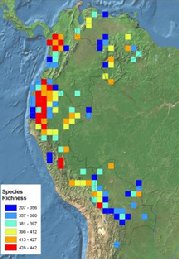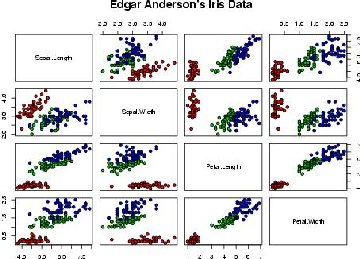Associate Scientist, Analysis Unit, Center for Conservation and Sustainable Development
Research Interests
• Understanding the determinants of the abundance and distribution of organisms at a variety of spatial scales, ranging from the small extents on which foraging theory focuses, to the broad geographic extents characteristic of macroecology
Web Page: MBG, The R Program Project
Project: Spatial variation in plant species range size and botanical collection effort. The size of the geographic distribution of a species, hereafter range size, is important in ecology and evolution for several reasons. In particular, patterns of variation in range size across species suggests that general mechanisms may underlay the relationships between the spatial distribution of organisms and body size, dispersal ability, abundance, and properties of the ecological niche. Range size may also partly determine the likelihood of speciation and extinction. Thus there is much interest in describing how range size varies across species and across regions of the world. A recent high profile paper (Morueta-Holme et al. 2013. Ecology Letters 16: 1446–1454) suggested that the range sizes of species occurring in the Andean region of South America tend to be smaller and more variable (across species) than that of species occurring in Amazonia. If true, this spatial pattern of variation in range size would have important consequences for our understanding of the factors determining range size and the vulnerability to extinction of species occurring in different regions of the New World. However, there are concerns that the pattern documented by Morueta-Holme et al. (2013) may artifactual, resulting from differences in botanical sampling effort between the Andean region and Amazonia. In this project we will use computer simulation experiments based on models of botanical collection effort and discovery (Sheth et al. 2008. Conservation Biology 22: 200–211; Sheth et al. 2012. Global Ecology and Biogeography 21: 732–742), along with the TROPICOS database, to test the extent to which the patterns documented by Moruet-Holme et al. (2013) can be artifactual, resulting from differences in the intensity and spatial distribution of collection effort across regions.
 |
 |